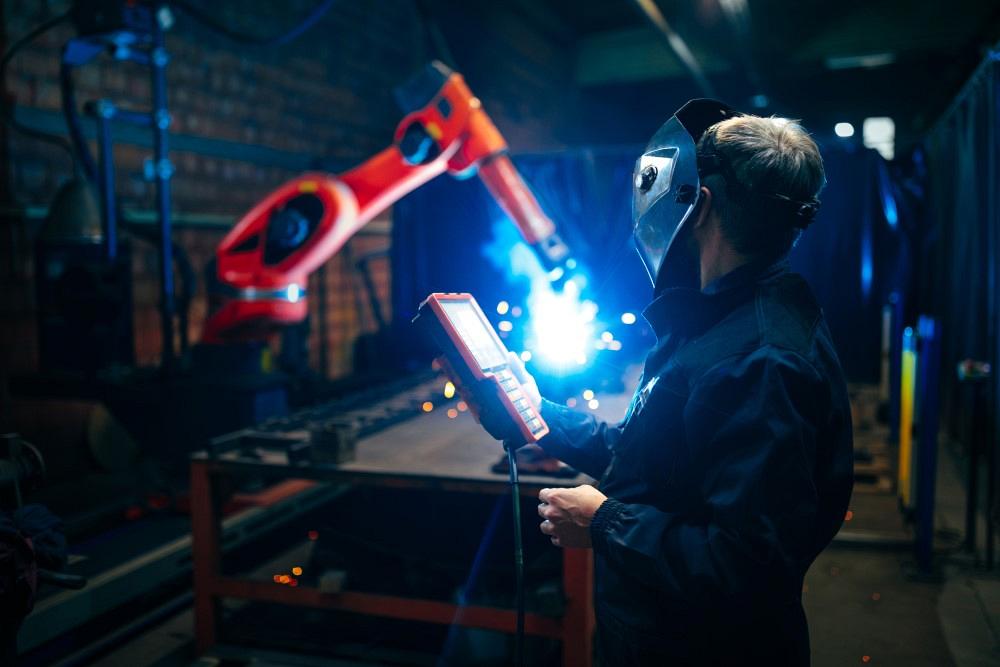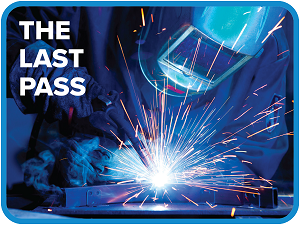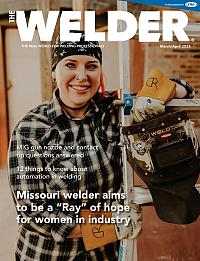Program Coordinator/Welding Instructor
- FMA
- The Fabricator
- FABTECH
- Canadian Metalworking
Categories
- Additive Manufacturing
- Aluminum Welding
- Arc Welding
- Assembly and Joining
- Automation and Robotics
- Bending and Forming
- Consumables
- Cutting and Weld Prep
- Electric Vehicles
- En Español
- Finishing
- Hydroforming
- Laser Cutting
- Laser Welding
- Machining
- Manufacturing Software
- Materials Handling
- Metals/Materials
- Oxyfuel Cutting
- Plasma Cutting
- Power Tools
- Punching and Other Holemaking
- Roll Forming
- Safety
- Sawing
- Shearing
- Shop Management
- Testing and Measuring
- Tube and Pipe Fabrication
- Tube and Pipe Production
- Waterjet Cutting
Industry Directory
Webcasts
Podcasts
FAB 40
Advertise
Subscribe
Account Login
Search
Changes in the welding landscape—can the fabrication industry embrace them?
Welders can progress while honoring the fabrication sector's tried and true processes
- By Greg Siepert
- April 12, 2023
- Article
- Arc Welding
In my first column, I asked you to ponder this question: How can I help, guide, or point the next aspiring welder, inspector, trainee, instructor, or employee in the right direction? Keeping with that theme of positive industry change, I would like to discuss the changes in the welding world and pose another challenge to you.
In my short 24 years in welding, I have seen fads come and go, the latest and greatest technology fade from the limelight, and things return to the forefront (not only in welding, but in management techniques and education). I used to resist this thought of change. If it has always worked, then why make changes?
Author/speaker/entrepreneur Jack Canfield sums this up well with this response:
“Change is inevitable in life. You can either resist it and potentially get run over by it, or you can choose to cooperate with it, adapt to it, and learn how to benefit from it. When you embrace change, you will begin to see it as an opportunity for growth.”
As an educator pushing for automation and other new technologies, both in the welding lab and the classroom, I have to remind myself that I must work to balance the application and training needs for the four major processes: GMAW, GTAW, SMAW, and FCAW. There is a Catch-22 that happens when older methods are looked down upon as new developments move into the industry. I have heard over and over in one fashion or another that “the need to teach stick welding is going away and we should instead focus on modern production methods,” or that “we don’t need TIG welders, we need production MIG welders.”
While modern production welding methods are the bread and butter of many manufacturing industries, there is still a need for the training and utilization of all major welding processes. There are many sectors of this industry that would be in a huge mess without the younger generations coming in and wanting to grow.
We are at the forefront of the type of changes that not only will make our jobs better, easier, and more productive, they also will drive training methods that increase the rate and success for future welders. It is so easy for us to get caught in the routine, the comfort, and the known that when things begin to change, our discomfort level seems to rise dramatically. Change can be anything from new welding machines, welding techniques, and teaching methods to alternative training methods or new work order systems.
Regardless of where you are in the welding world, I challenge you to embrace the changes that are happening around you. Implement new processes, if possible. Realize that just because it isn’t how you were trained, it doesn’t mean it is invalid.
Lastly, please do not forget that it takes all processes, old and new, to support the very things—manufacturing, construction, farming, oil and gas, and infrastructure—that we all depend on in our lives.
About the Author

Greg Siepert
Hutchinson Community College
1300 N Plum
Hutchinson, KS 67501
About the Publication
subscribe now

The Welder, formerly known as Practical Welding Today, is a showcase of the real people who make the products we use and work with every day. This magazine has served the welding community in North America well for more than 20 years.
start your free subscription- Stay connected from anywhere

Easily access valuable industry resources now with full access to the digital edition of The Fabricator.

Easily access valuable industry resources now with full access to the digital edition of The Welder.

Easily access valuable industry resources now with full access to the digital edition of The Tube and Pipe Journal.
- Podcasting
- Podcast:
- The Fabricator Podcast
- Published:
- 04/16/2024
- Running Time:
- 63:29
In this episode of The Fabricator Podcast, Caleb Chamberlain, co-founder and CEO of OSH Cut, discusses his company’s...
- Trending Articles
Sheffield Forgemasters makes global leap in welding technology

ESAB unveils Texas facility renovation

Engine-driven welding machines include integrated air compressors

How welders can stay safe during grinding

The impact of sine and square waves in aluminum AC welding, Part I

- Industry Events
16th Annual Safety Conference
- April 30 - May 1, 2024
- Elgin,
Pipe and Tube Conference
- May 21 - 22, 2024
- Omaha, NE
World-Class Roll Forming Workshop
- June 5 - 6, 2024
- Louisville, KY
Advanced Laser Application Workshop
- June 25 - 27, 2024
- Novi, MI




























